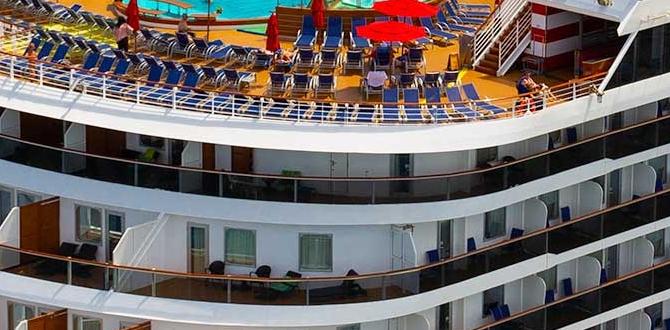Planning a Bergen road trip and need a reliable base? This guide provides essential tips for securing the perfect starting point, ensuring a smooth and enjoyable adventure with practical advice for packing, accommodation, and local exploration.
Embarking on a road trip to Bergen, Norway, promises breathtaking fjords and stunning coastal scenery. But where do you begin when planning your journey’s foundation? Finding the right “base” is key. This isn’t just about booking a hotel; it’s about choosing a strategic location that maximizes your enjoyment and minimizes travel stress. Many travelers worry about getting lost, overpaying for accommodation, or missing out on hidden gems. Don’t let these concerns hold you back! This guide will break down everything you need to know to establish your perfect Bergen road trip base, ensuring comfort, convenience, and unforgettable experiences.
Why Your Bergen Road Trip Base Matters
Choosing the right base for your Bergen road trip is more than just picking a place to sleep. It’s the anchor for your entire adventure. A well-chosen basecamp simplifies logistics, saving you valuable time and energy that would otherwise be spent on lengthy commutes or searching for amenities. It allows you to immerse yourself in the local culture, access attractions easily, and have a comfortable haven to return to after a day of exploring. Think of it as the launching pad for all your discoveries.
The Advantages of a Strategic Base
- Time Efficiency: Less time traveling to and from sights means more time enjoying them.
- Cost Savings: A good base can offer better value for money and access to affordable dining and activities.
- Convenience: Easy access to groceries, fuel, and essential services.
- Deeper Exploration: Allows you to discover local neighborhoods and off-the-beaten-path attractions.
- Reduced Stress: Knowing your central point of operations provides peace of mind.
Choosing Your Bergen Road Trip Base: Key Factors
When selecting your base for a Bergen road trip, several factors come into play, especially considering the unique geography of Western Norway. It’s about balancing the allure of the city with the accessibility of the surrounding natural wonders.
Location, Location, Location
Your primary consideration should be proximity. Are you looking to stay within the vibrant heart of Bergen itself, or do you prefer the tranquility of a smaller town or village nearby? Each offers distinct advantages:
- Bergen City Center: Offers unparalleled access to museums, restaurants, the famous Bryggen wharf, and public transport hubs. It’s ideal if you plan to focus heavily on urban exploration and enjoy a lively atmosphere.
- Suburban Bergen: Areas just outside the immediate city center can offer more affordable accommodation and easier parking, while still being a short drive or bus ride away from the main attractions.
- Coastal Towns (e.g., Askøy, Sotra): Provide stunning sea views and a more relaxed pace. These are great if you want to experience coastal life alongside your city visits, but be prepared for longer drives into Bergen.
- Fjord-side Villages (e.g., within Osterøy municipality): Offer a truly immersive natural experience. These are perfect for those prioritizing hiking, kayaking, and scenic beauty, but require careful planning for city access.
Accessibility and Transportation
How will you get around once you’ve set up base? Consider:
- Parking: Especially in Bergen’s historic center, parking can be scarce and expensive. If you plan to drive everywhere, look for accommodations with dedicated parking or research public parking garages beforehand. Some smaller towns offer more plentiful free parking.
- Public Transport: Bergen has an excellent public transport system, including buses and ferries. Staying near a bus stop or ferry terminal, even if slightly outside the center, can be a smart move. Check out Skyss, the local public transport authority, for routes and schedules.
- Proximity to Major Roads: If you plan on extensive day trips to fjords and other attractions, being close to main E-roads or county routes is beneficial.
Amenities and Services
What do you need readily available? Think about:
- Groceries: Access to supermarkets is crucial for self-catering and saving money.
- Restaurants/Cafes: If you prefer dining out, being near a variety of eateries is important.
- Fuel Stations: Essential for a road trip, especially if you venture into more remote areas.
- Banks/ATMs: For quick cash needs.
- Healthcare: While hopefully not needed, knowing the location of pharmacies or medical centers can offer peace of mind.
Accommodation Type and Budget
The type of accommodation significantly impacts your experience and budget. Options include:
- Hotels: Offer comfort and services but can be costly, especially in prime locations.
- Guesthouses/B&Bs: Often provide a more personal touch and can be more affordable.
- Vacation Rentals (e.g., Airbnb): Ideal for families or longer stays, offering kitchen facilities and more space. Can be very cost-effective.
- Hostels: The most budget-friendly option, often with shared facilities, but can offer private rooms too.
Your budget will heavily influence which accommodation type and location are feasible. Always compare prices and read recent reviews.
Top Base Locations for Your Bergen Road Trip
Let’s explore some practical base locations, considering different travel styles and priorities. These are more than just points on a map; they are your gateways to adventure.
1. Bergen City Center: The Urban Explorer’s Dream
Staying right in the heart of Bergen offers the ultimate convenience for city-focused travelers.
Pros:
- Immediate access to attractions like Bryggen, the Fish Market, Fløibanen funicular, and museums.
- Wide range of dining, shopping, and entertainment options.
- Excellent public transport connections for day trips without your car.
Cons:
- Limited and expensive parking.
- Higher accommodation costs.
- Can be very busy and crowded.
2. Laksevåg/Loddefjord: The Practical Suburban Choice
Located west of the city center, these areas offer a good balance of accessibility and practicality.
Pros:
- More affordable accommodation options, often with free parking.
- Good bus connections into the city center (often 15-25 minute ride).
- Access to local shops and amenities.
Cons:
- Less of a ‘vibrant’ atmosphere compared to the city center.
- Requires using public transport or driving to reach major attractions.
3. Askøy: The Coastal Gateway
A large island municipality just north-west of Bergen, connected by a bridge. It’s ideal for those who love the sea air.
Pros:
- Beautiful coastal scenery and hiking opportunities.
- Often more affordable housing and ample parking.
- A more tranquil, residential feel.
- Relatively easy drive into Bergen (approx. 30-45 minutes depending on traffic and location on Askøy).
Cons:
- Requires driving into Bergen for most city-based activities.
- Fewer dining and entertainment options compared to the city.
4. Osterøy: The Natural Oasis
This large island, east of Bergen, is renowned for its dramatic landscapes and rural charm.
Pros:
- Stunning natural beauty, perfect for hikers and nature lovers.
- Peaceful and authentic Norwegian countryside experience.
- Opportunities for kayaking, fishing, and exploring quiet villages.
- Several charming guesthouses and cabins available.
Cons:
- Requires a significant drive (approx. 1 hour+) to reach Bergen city center.
- Limited amenities and services; requires careful planning.
- Less ideal if your primary focus is urban exploration.
Preparing Your Vehicle for a Bergen Road Trip
Your car is your trusty steed on this journey. Ensuring it’s in top condition is paramount for a stress-free road trip. Don’t overlook these essentials!
Essential Vehicle Checks
- Tires: Check tire pressure and tread depth. Essential for varied Norwegian road conditions. Ensure your tires are suitable for the season (studless winter tires are mandatory in Norway during winter months, typically from November 1st to the first Sunday after Easter).
- Fluids: Top up engine oil, coolant, brake fluid, and windshield washer fluid.
- Brakes: Ensure your brakes are in good working order.
- Lights: Check that all headlights, taillights, brake lights, and turn signals are functioning correctly.
- Battery: Test your car battery, especially if traveling in colder months.
- Wipers: Ensure your windshield wipers are in good condition and replace them if necessary.
Emergency Kit Essentials
Norway’s roads can be remote. Being prepared for the unexpected is wise.
- First-aid kit
- Jumper cables
- Tire repair kit or spare tire (with tools to change it)
- Reflective vest (required by law in many European countries, including Norway, to be visible if you exit your vehicle on a road)
- Warning triangle
- Flashlight with extra batteries
- Basic toolkit
- Blanket
- Water and non-perishable snacks
- Phone charger/power bank
Navigating Norwegian Roads
Norwegian roads are generally well-maintained, but they can be narrow, winding, and feature steep inclines/declines. Be aware of:
- Speed Limits: Strictly enforced. Pay attention to signs. Urban areas are typically 30-50 km/h, national roads 70-80 km/h, and motorways up to 90-110 km/h.
- Tolls: Many roads, bridges, and tunnels have tolls. Your rental car company may offer an AutoPASS chip for automatic payment, or you’ll need to pay online within a specific timeframe. Research the AutoPASS visitor registration.
- Ferries: Essential for crossing fjords and islands. Have payment methods ready.
- Weather: Can change rapidly. Always check the forecast before setting out. The Norwegian Meteorological Institute offers reliable information: Yr.no.
Packing Comfortably for Your Road Trip
Comfort is king on any road trip. For Norway, this means being prepared for varied weather and ensuring you have essentials for both driving and exploring.
Clothing Essentials
Layering is key for Norway’s unpredictable climate:
- Base Layers: Merino wool or synthetic materials to wick away moisture.
- Mid Layers: Fleece jackets or down vests for insulation.
- Outer Layer: Waterproof and windproof jacket and trousers.
- Footwear: Comfortable, waterproof walking shoes or hiking boots. Extra socks are a must.
- Accessories: Warm hat, gloves, and a scarf.
Personal Care and Convenience Items
Don’t forget the items that make daily life easier and more comfortable, especially on longer journeys.
- Toiletries: Travel-sized essentials.
- Medications: Any prescription or over-the-counter medications you regularly use.
- Sunscreen and Sunglasses: Even on cloudy days, the light can be strong, especially near water.
- Reusable Water Bottle: Tap water in Norway is excellent and safe to drink.
- Snacks: Save money and have easy access to quick bites.
- Entertainment: Books, music, podcasts for downtime or long drives.
Special Considerations: Diaper Needs for All Ages
For travelers who require them, managing diaper needs on a road trip is crucial for comfort and confidence. Whether you’re traveling with infants, children, or require adult protection for personal health reasons, planning ahead ensures peace of mind.
- For Infants and Children: Pack more diapers than you think you’ll need, along with wipes and changing supplies. Consider disposable or cloth options based on your preference and availability of laundry facilities. Look for waterproof changing pads that are easy to clean in the car.
- For Adults: If you use adult diapers or protective underwear, ensure you have an adequate supply for the duration of your trip. Choose products designed for comfort and discretion, suitable for varying activity levels. Brands offering high absorbency are ideal for long drives or extended sightseeing. Many pharmacies in Norway carry a range of these products, but it’s wise to bring a starter supply. Websites like NorthShore Care Supply offer a wide selection that can be shipped, providing options to research and order before your trip.
- Disposal Bags: Carry discreet disposal bags for used diapers, maintaining cleanliness and hygiene in your vehicle.
Sample Bergen Road Trip Itinerary from a Base
Let’s imagine you’ve chosen a base just outside Bergen city center for a blend of convenience and slightly lower costs. Here’s a possible 3-day itinerary that utilizes your car for day trips and public transport for city exploration.
Day 1: Exploring Bergen City
- Morning: Drive to Bergen, park at a designated garage (e.g., Klostergarasjen), and take public transport (bus) or walk into the city center.
- Explore Bryggen Wharf (UNESCO World Heritage site).
- Visit the Hanseatic Museum.
- Lunch at the Fish Market.
- Afternoon: Take the Fløibanen funicular up Mount Fløyen for panoramic views and a short hike.
- Evening: Enjoy dinner in the city before taking the bus back to your base.
Day 2: Fjord Adventure to Sognefjord (Western Section)
An early start is essential for this longer day trip.
- Morning: Drive towards Gudvangen (approx. 2-2.5 hours).
- Consider a scenic fjord cruise on Nærøyfjord (part of Sognefjord, a UNESCO World Heritage site) from Gudvangen to Flåm. Park your car in Gudvangen and take the ferry back, or arrange transport back to Gudvangen.
- Alternative: Explore the dramatic Stalheimskleiva road (seasonal access, check if open) for incredible views.
- Lunch in Flåm or Gudvangen.
- Afternoon: Drive back to your base, perhaps stopping in Voss for a brief look around.
Day 3: Coastal Exploration and Relaxation
Discover the rugged coastline near your base or explore a different direction.
- Option 1 (if based on Askøy): Explore the scenic coastal roads of Askøy, visit Herdla Fortress, or enjoy a walk at Kolbeinsvik and Kleppevik.
- Option 2: Drive south towards the Hardangerfjord region (longer drive, approx. 1.5-2 hours to closest points). Visit a fruit farm (seasonal) or enjoy the views at viewpoints like Steinsdalsfossen waterfall.
- Option 3: Visit the Hannisdalen nature reserve for bird watching and tranquil walks.
- Evening: Relax at your base, perhaps preparing a meal with local produce.
Bergen Road Trip: Frequently Asked Questions
Here are some common questions beginner road trippers often have about planning their Bergen adventure.
Q1: Is it easy to drive in Bergen?
Driving in Bergen’s city center can be challenging due to narrow, historic streets, one-way systems, and limited, expensive parking. It’s often easier to park outside the center or at your accommodation and use public transport or walk to explore the main attractions.
Q2: What is the best time of year for a Bergen road trip?
The shoulder seasons (May-June and September) offer pleasant weather, fewer crowds, and beautiful scenery. Summer (July-August) is warmest but busiest. Winter offers a different charm with snow-capped mountains, but driving conditions can be more challenging.
Q3: Do I need to book accommodation in advance?
Yes, especially if you plan to travel during peak season (summer) or if you have specific requirements. Booking in advance guarantees availability and often secures better prices.
Q4: Are there many charging stations for electric vehicles (EVs) in Norway?
Norway has an extensive network of EV charging stations, arguably one of the most comprehensive globally. You’ll find them in



